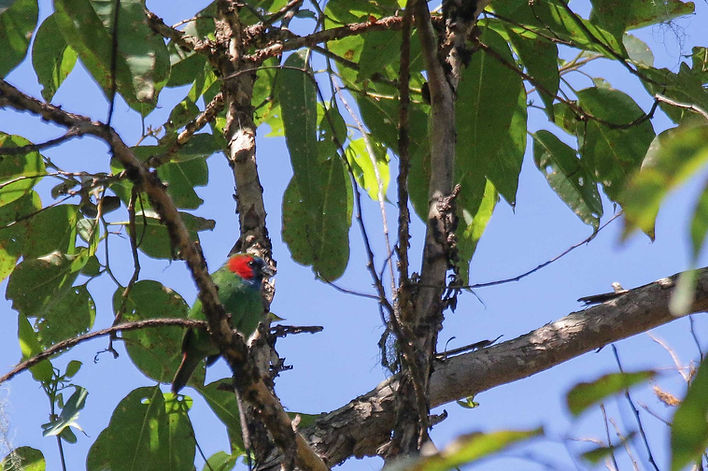In the book of “Birds of the Indonesian Archipelago – Greater Sundas and Wallacea” written by Eaton J., et al which was published in 2017, stated that there are 18 species of birds that have not been scientifically described. Of these 16 are split species and the two remaining are newly discovered.
One of them is “Mutis/Timor Parrotfinch” Erythrura sp. nov, which was first discovered and documented by James Eaton in the Euclyptus forest around Mount Mutis, West Timor in 2012. After the first encounter, other birders also tried to find this parrotfinch without a legal Indonesian name in the same location, even some researchers who try to get holotype to be officially described.
On August 12, 2018, the birdpacker team (Swiss Winasis, Waskito Kukuh and Nurdin Setio) visited Fatumnasi village which is located at the foot of Mount Mutis. Guided by Sam, son-in-law of local village chief Mateos Anin, we tried to explore the birds there with the main target “Mutis Parrotfinch”.
Sam often guides overseas bird watchers, showing that some of the main locations that are commonly visited to see the parrotfinch which perhaps most closely resemble Red-eared Parrotfinch E. coloria that are currently only known from Mindanao in the Philippines, 2,000 km away.
The book states that this parrotfinch is usually observed alone or in pairs and rarely mixes with Tricoloured Parrotfinch E. tricolor which is quite common in West Timor. The place for food its foraging almost the same, from the bottom of the forest, shrubs to Eucalyptus top canopy. So far, this bird is found at an altitude of 1400-1850 asl.
It is quite difficult to find this bird, its small size; green dominant body; and the sound is very similar to its brother. Starting from morning to noon we visited 3 spots that usually have some records. Until we decide on the 4th spot to wait longer until late afternoon.
While making coffee and instant noodles on the spot while sharpening your ears and eyes, prepare for the sound or appearance of the main target. Until the supplies we make are finished and packed, we have not seen it coming. Then we decided to go back and repeat the luck tomorrow.
However, just shifted about 50 meters suddenly Sam and Swiss, who happened to walk more in front stopped and then lifted the camera. The shutter starts to sound without a word mentioning the name of the bird.
Waskito and Nurdin just kept quiet and did not make disturbing movements. After a while there was a small green object from the bush flying up to the middle canopy then perched on one of its branches. Simultaneously the two people behind lifted the binoculars and cameras slowly. Together the shutter flare alternately sounds for almost 2 minutes. After that, the object flew leaving the four of us, spontaneously we immediately shouted relieved that the object was a adult male Mutis Parrotfinch who we were looking for all day. “Yeeaaaahhhh … !!!”
On the second day, we tried again to repeat the same place earlier and pass by shortcut to arrive quickly. About 100 meters before the destination, we met female birds completing our search for a mysterious parrotfinch from the mountain forest of Mutis.
The difficulty of finding this bird is, like the literature, it moves solitaire; small size with ripe green; and a sound that is almost similar to the Tricoloured Parrotfinch “psssttt … psssttt” in flight. But it can be guarantee, this bird really exists!
